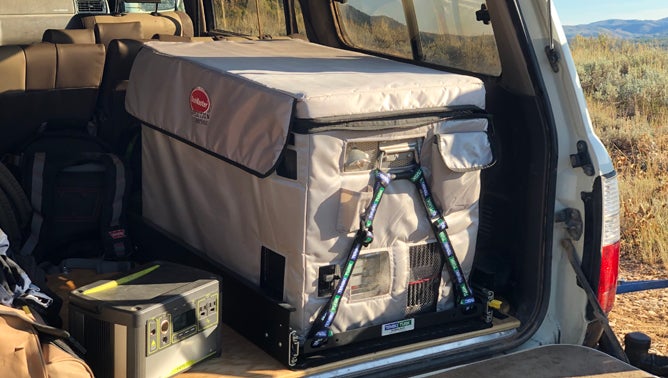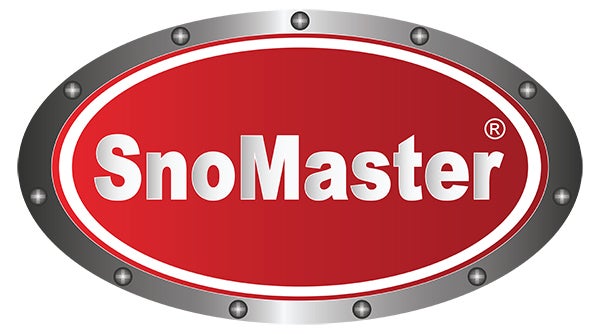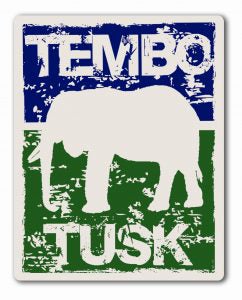When it comes to gear that has transformed the backcountry for those of us who explore in 4x4s, a tie of sorts may exist between rooftop tents and portable fridge/freezers. While even a snorkel isn’t as obvious as an RTT mounted high atop a truck, for pure utility and unique functions it’s hard to beat one of these 12v fridges. It’s no surprise that the market has grown, and today is home to dozens of companies hawking replicants of the leading brands. To understand the difference, consumers need to dig deeper in this increasingly crowded market.
In addition to many knock-offs, the North American market has also seen a handful of long-standing brands from the renowned off-road adventure countries of Australia and Africa importing their lines to the U.S. When they do, it’s typically an eye-opener for those in the States. Brands like ARB come to mind. These brands emerged from unforgiving outback and savannah exploration. And the products they have introduced to our market continue to influence buyers. In the case of 12v fridges, that’s especially true.
While Australian companies are commonly known, brands based in Africa are better known in Europe. That has shifted thanks to a few companies that have persisted and are gaining awareness (e.g., Alu-Cab). SnoMaster exemplifies that trend. The company broke into the fridge/freezer market two decades ago, going head-to-head with Australian brands in that competitive country circa 2012. A year later, SnoMaster began U.S. sales via its Austin, Texas base (not surprisingly the state most resembling both Africa and Australia).
Why is that relevant? The heart and soul of an off-road fridge/freezer is its cooling unit, the compressor. There are actually very few compressor manufacturers. Consequently, most fridge brands rely upon a compressor produced by one of the major manufacturers: Engel/Sawafugi, Dometic/Waeco, or DanFoss/Secop. SnoMaster broke from this pattern by creating its own compressors as the starting point for its designers. In the same way, its fridges are purpose-built for extended off-road use, emphasizing durability, insulation efficiency, and meaningful features.
Starting in 2017, thanks to Todd Trudeau of SnoMaster USA, we began testing the company’s two leading lines. First, we ran its Classic for nearly a year, followed by the Expedition, both of which build off the identical 66w compressor (even their largest 95L models), with both intended for off-road/overland users. After two years of usage, we’ve gained a real-world understanding of their strengths and weaknesses.
Table of contents
What’s Inside
Unpacking a product for the first time tells you a lot about a brand. SnoMaster ships fridges to many customers, and that was how both units reached us. Each comes protected by a generous section of cardboard, thick Styrofoam, and individual bagging. The result protection was very good, which is important with a large, costly product like a fridge/freezer. After unpackaging, the completeness of the SnoMaster units becomes clear. Rather than leaving out features to be sold separately as “accessories,” all that’s needed is included. That goes for built-in features as well as potential add-on’s (e.g., removable cover).
It’s that lengthy list of built-in features that, along with its proprietary compressor, immediately make the SnoMaster unique. The key items this includes are a wireless remote control (solar powered), easy view digital display, stainless steel hardware (including spring-loaded handles), textured stainless steel outer skin, removeable doors, integrated feet that allow fixed mounting, low battery protection settings, AC and DC power cords, serviceable fuses, food grade rubber-coated steel baskets, LED interior lighting, open lid alarm, power loss alarm, multi-point cooling vents, and, to keep things real, a bottle opener (complete with cap catcher on the removable cover).
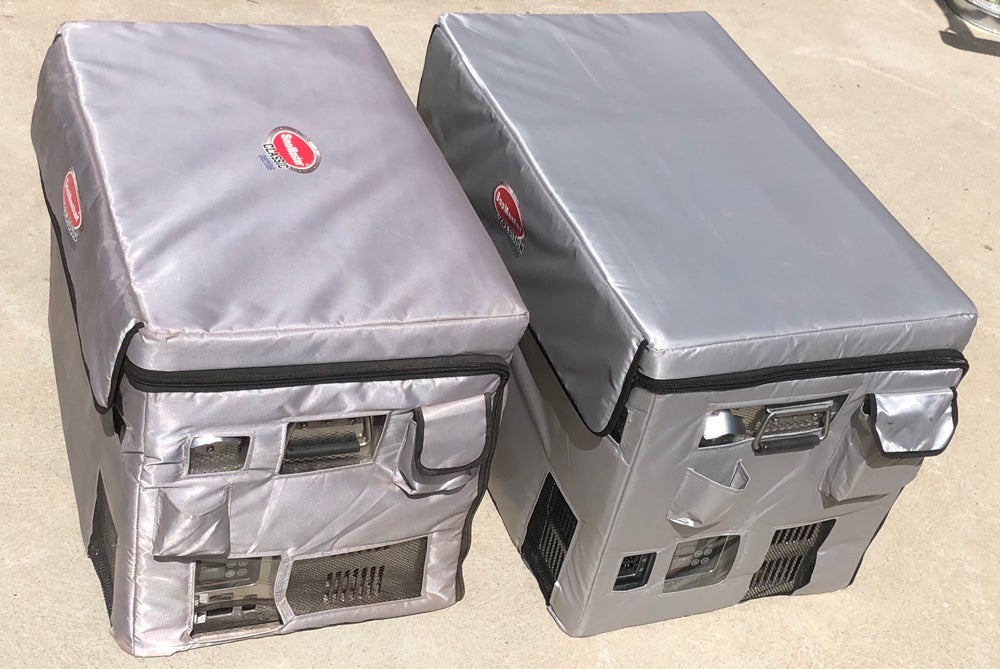
What’s less apparent is one of SnoMaster’s design specifications affecting efficiency. The Classic line all use 60mm insulation throughout. That thickness, coupled with the reflecting skin and reflective removable cover, adds up to improved resistance to heating. Top competitor models like ARB and National Luna also use 60mm as their foam thickness. SnoMaster, however, increases that volume of insulation by 17% in its top-of-the-line Expedition Series. With 70mm of insulation, the Expedition models are among the best in class.
SnoMaster offers a range of sizes as well. The Classic includes 40, 56, 60 and 72-liter models, along with both single and dual compartment (and dual door) configurations. The Expedition Series includes 67, 75, 85 and 95-liter models, again with several configuration choices.
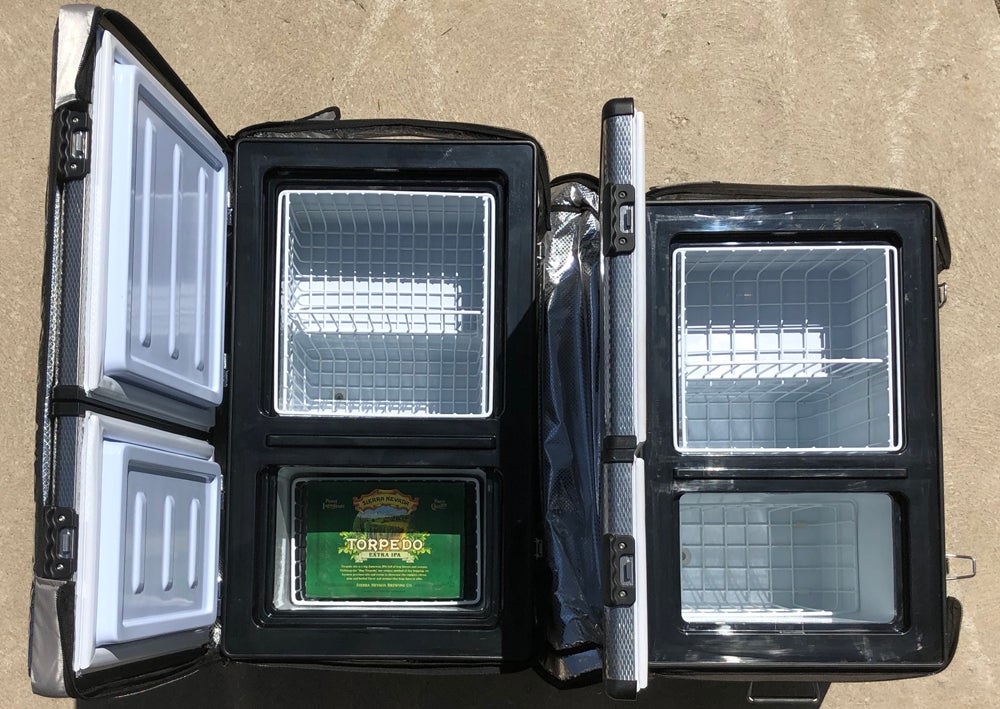
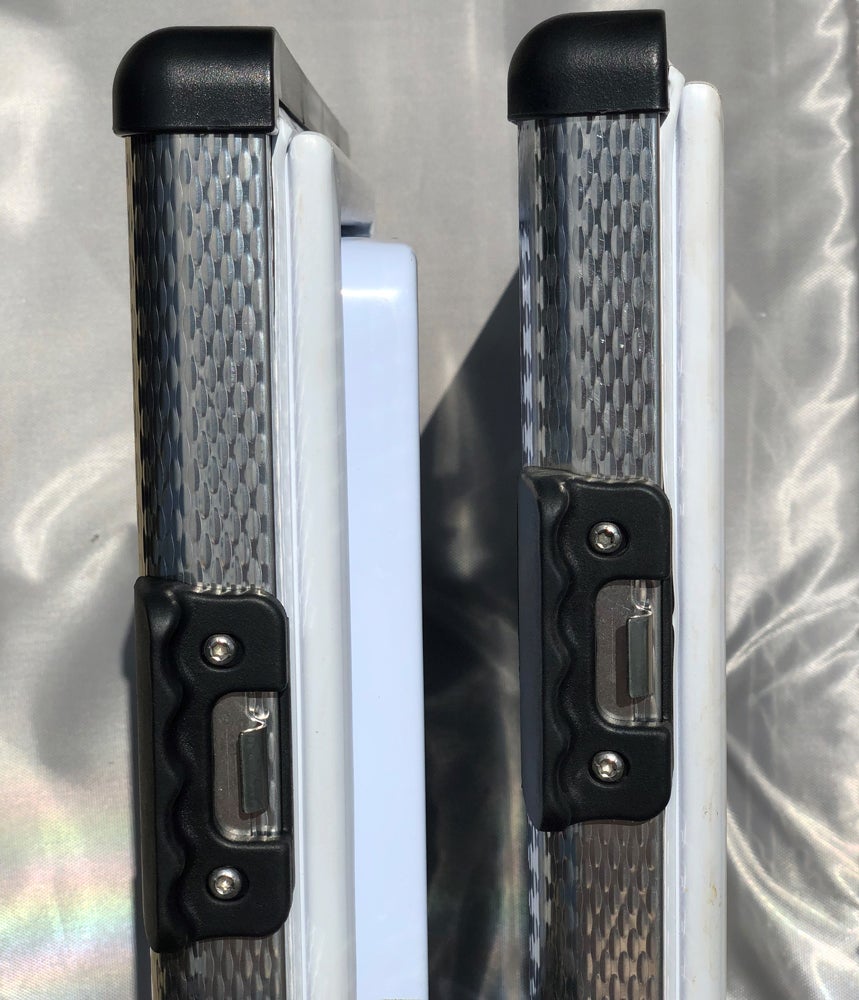
We opted for the Classic 56D, SnoMaster USA’s most popular model, and the more voluminous Expedition 67D, both featuring the more flexible dual compartments/doors. These trail-ready models are as substantial in mass as they are volume and features. Weighing 57 and 75 lbs respectively, they are on par with similarly rugged fridges (e.g., ARB Elements, National Luna 2-in-1). The result is a fridge that likes to be mounted long-term, and which owners will not easily move in and out of a vehicle. As a result, we opted to use a fridge slide for the Expedition (see sidebar), as we like to keep our Land Cruiser loaded and ready for trips.
When selecting a fridge, two volumes matter – the interior, or contents capacity, and the exterior, or space consumption. Make no mistake, a fridge/freezer will eat up a good bit of the volume of any vehicle. This is especially true if you’ll want to the open lid(s) while the fridge is inside. While both SnoMaster models can easily handle items being stacked on them, and are plenty strong to use as a seat, in most vehicles the top must be kept clear for access, or to allow a slide like the one from Tembo Tusk to allow easy movement out of the cab. The generous insulation in SnoMaster models means they are larger externally than many comparable volume fridges.
Living With the SnoMaster Fridge/Freezers
For over two years we have used the Classic and Expedition through all seasons, in several vehicles (mostly a 5th Gen 4Runner and 80 Series Land Cruiser), and for trips lasting up to three weeks. Although unintended, the testing also included nearly two weeks of emergency 120v usage, following our home refrigerator dying, when we “downsized” to live out of the two SnoMaster models.
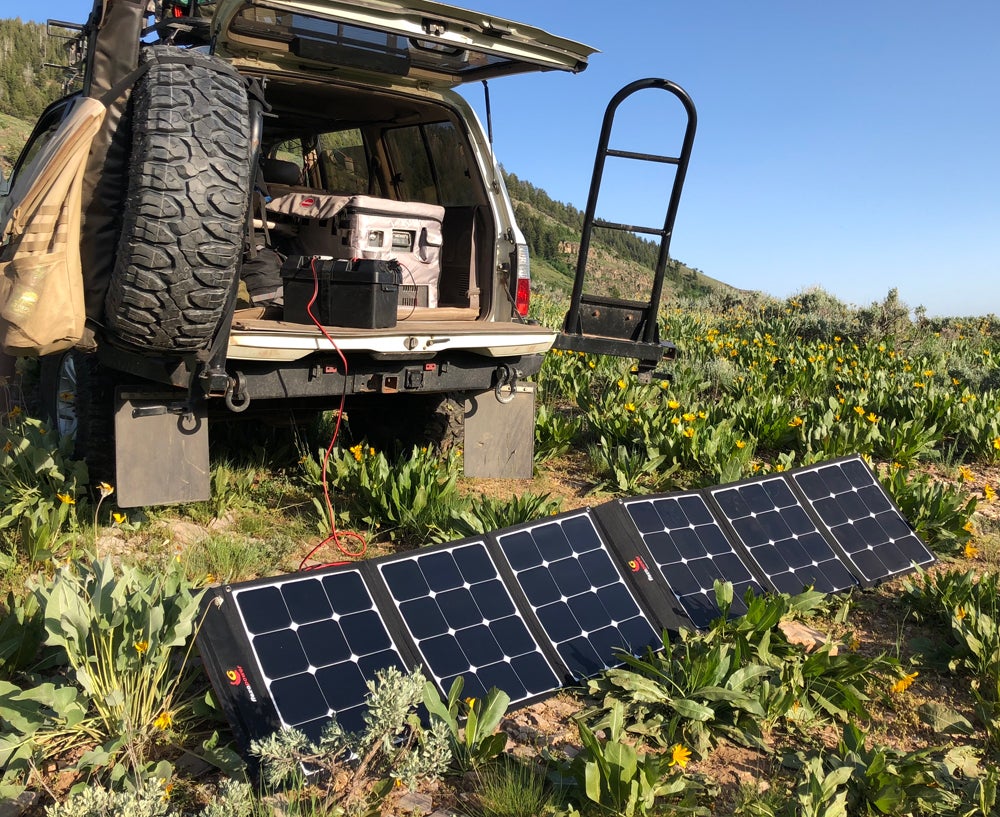
Powering a 12v fridge/freezer can easily exceed the capacity of any 4×4’s stock batteries. Because starter batteries allow limited depth of draw before damage begins, it’s important to assess your electrical system’s abilities. The two SnoMasters each draw around 40Ah per day in summer conditions, depending upon these key factors: the temperature setting; if they are in the shade; if are they full of food/drinks; and how often the lid is opened. While you can’t change the weather forecast, you can do a lot to keep the compressor from cycling on and off by optimizing just those factors.
When it does cycle on, the SnoMaster compressor goes from pulling ~12w to nearly 70w. The real-world effects of that power consumption are seen in what systems will sustain long-term operation. For instance, Goal Zero’s popular Yeti 400 (33Ah, Lead Acid battery) will run either fridge for 18-20 hours. When run off of the dual battery system in our Land Cruiser, which uses a Full Throttle Group 49 (80Ah, AGM) auxiliary or “house” battery, we can easily camp for two full days. If you step up to the remarkable new Lithium Ion-based deep cycle batteries, such as Battle Born’s LiFePO4 (100Ah, yet only 31lb) the ability to stay put improves again.
Shop for Battle Born LiFePO4 Batteries
However, running either SnoMaster off of a solar system is ideal, and also simple. Using different battery systems, we have operated the fridges with panels from Solbian (72w), P3 (75w), PowerFilm (120w), Zamp (140w), Go Power! (200w), Off Grid Trek (215w) and Flexopower (240w). In sunny conditions, the lowest output of these panels, the highly efficient Solbian, is adequate to extend the battery’s capacity by several days. For most users, however, given the likelihood of cloud cover and trees blocking the sun’s rays, a larger system¾100w or higher¾ is a safer choice. This is especially true if the fridge isn’t your only electrical device.
Shop for PowerFilm 120w Solar Panels
SnoMaster’s independent temperature setting range for each compartment means you can manage power draw via those controls as well. Operating from 50F to -8F, their dual compartment models let you decide if one or both compartments need to maintain frozen food, or if their temperature settings will simply assure cold drinks and perishables with a setting of 35-40F. Additionally, both the Classic and Expedition lines have power settings allowing you to opt for Auto, High or Low modes. Auto is the default, while High is for operations in high temp’s or when powered off of 120v AC. Low is for when battery capacity is a concern. This and other settings are visible on the remote as well as the fridge’s LED screen. The latter is on the side of each fridge, making it easy to read when mounted on a slide, or even in a cabinet enclosure.
When it comes to controlling those temp’s, we’ve come to love the convenience of the remote control that comes standard with each fridge. Handy in size, and easy to read (at least the two temperatures), it never loses power thanks to its back panel being a solar charger (also has USB charging). Each remote is coded to its fridge, and allows you to control as well as monitor the fridge’s compartments. Equally comforting is the battery voltage status it lists. Though I have found that figure to vary by .1 to .2 volts from monitors directly tied to the battery, it’s accurate enough to keep you aware of pending lows. But more importantly, both fridges will readily keep frozen items in a solid state throughout a compartment.
How much do those temperatures vary? We monitored temperatures at 15-30 minute intervals during extended drives and periods in camp, as well as in testing in full sun in the driveway. From those readings it’s clear that compartment temperatures do vary somewhat from the selected temperature settings. Fluctuations of ~3F above or below the set temperature can be expected. In higher temperatures, or if the power setting is on Low, the range can vary slightly more.
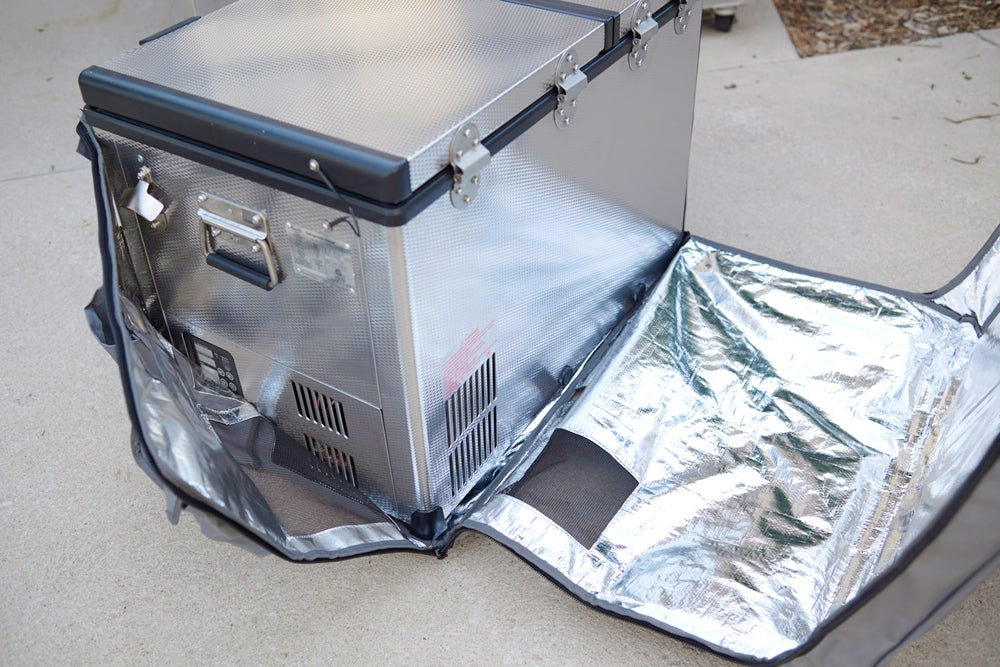
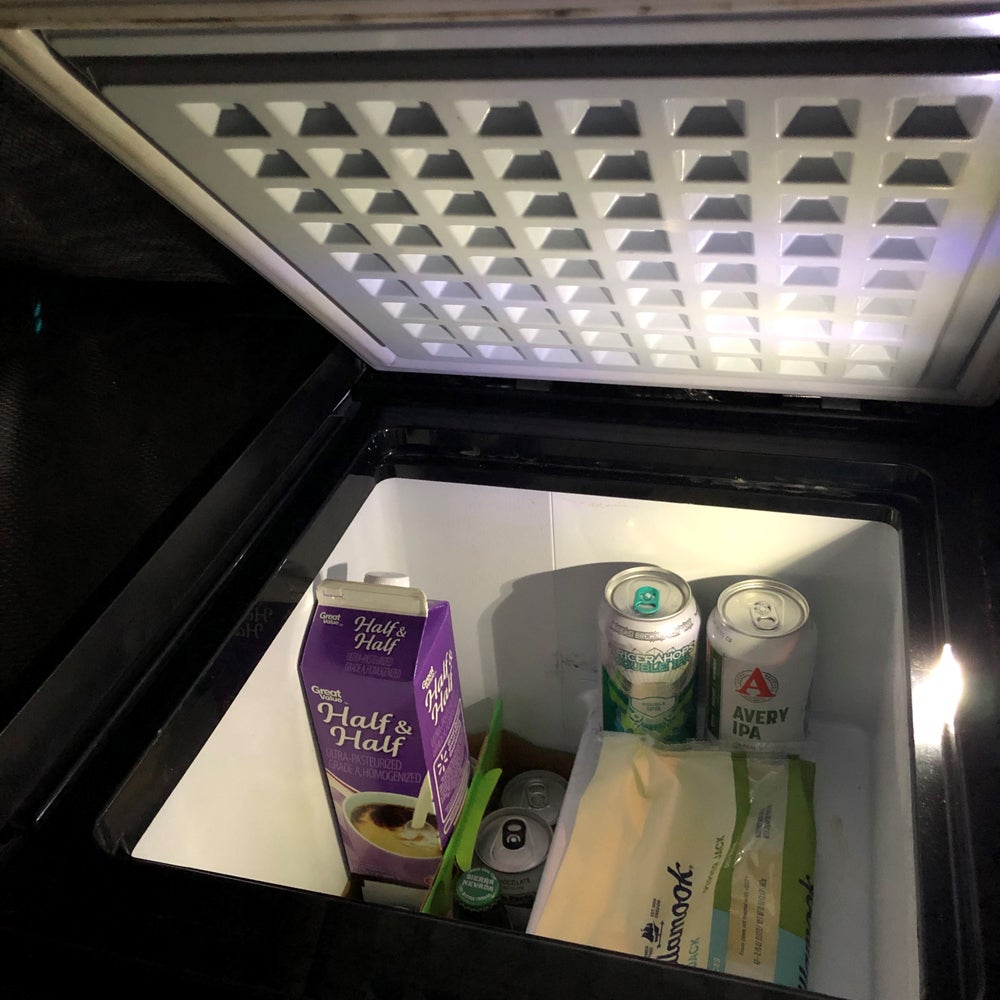
Classic and Expedition models come fully equipped with all accessories, including zip-off travel covers with foam insulation and reflective linings to reduce radiant heating, as well as interior LED lights.
Convenience is a key factor in fridge designs. SnoMaster has made access to compartments, as well as data, simple. The cover uses a Velcro flap and tough #10 coil zipper that has remained smooth to operate despite desert dust. Dual lids with strong, spring-loaded latches, which can be locked, make for easy access. Less endearing are the well-built but annoying lid hinges. While allowing each lid to be removed, in our experience they can come loose when a user opens one with any lateral pressure (easy to do when clambering around inside a truck and accessing food). Note that neither model will fully open inside of most SUV’s, though they open enough to access food if you hold the lid open.
The spaces inside each fridge are easy to use and deep. The smooth, white interior cleans up easily, includes bottom drains, and is well-lit by the built-in LED’s when night falls. The rugged bins are helpful if you’re looking for an item down below. In the Classic 56D they are also slightly narrower than some standard items, such as a 6-pack. This requires a little more planning for how you arrange contents. The larger dimensions of the Expedit in 67D make this less of an issue. Either size is a great choice for 2-5 people on multi-day trips. However, for some buyers, a 40L model may be more than adequate, also saving space and cost.
- Pros – Rugged, efficient, includes remote control & all accessories, 5yr warranty.
- Cons – Weight, cost, lid hinges detaching accidentally.
- Bottom Line – Top-tier fridge/freezers available in a wide range of models.
Tembo Tusk Slides
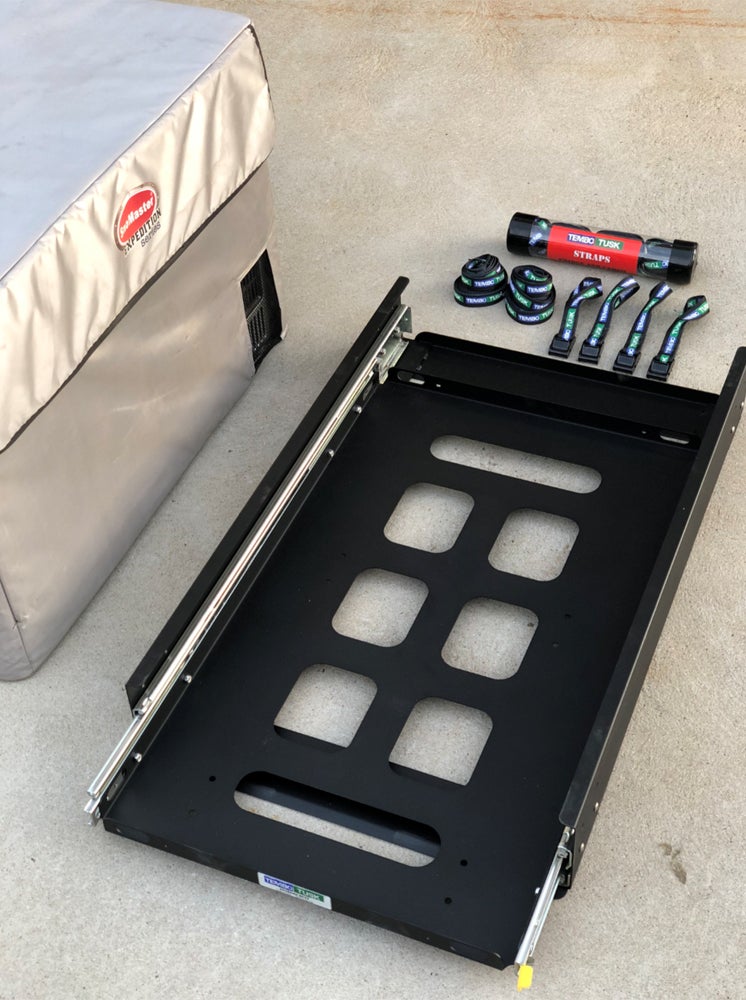
For protection of passengers and your fridge, securely mounting gear inside a vehicle is a must. Because of their mass, fridges are more convenient when coupled with a sliding tray. Tembo Tusk is a California company that makes slides to fit most popular fridges, including even the largest SnoMaster models. Made in America, their heavy-duty frames hold trays formed from stamped steel, and powder coated with matte black finishes. Ball bearing rails and a rigid frame let users glide even the largest fridge, which can exceed weigh 120lbs when loaded, with ease. All Tembo Tusk slides use a simple lever to lock or release the tray. With either side or front pull configurations, slides can be ordered to meet different mounting and access needs.
Tembo Tusk offers basic mounting holes on each slide’s base, but custom holes can be drilled to align with vehicle mounting points. At least (4) 1/4” bolts should be used, which in some vehicles may require the use of a larger mounting plate, independently bolted to the vehicle’s floor/bed, to assure a secure base on which to bolt the slide. Securing the SnoMaster to the slide is fast and easy using Tembo Tusk’s Extreme Duty Fridge & Cargo Tie Downs. The end result is a dramatic improvement in how easily a fridge is accessed when camping or stopping beside the trail.
Getting into a fridge without a slide is challenging in two ways: opening the fridge lid(s), and working around a loaded rig. Tembo Tusk slides let you move the entire fridge outside your vehicle. The double slide rails allow 34” of travel. For even the largest SnoMaster models, this means we can glide the fridge out the back end, and open both lids thanks to the overhead clearance. Rated at ~500lb, the Accuride slides are smooth, quiet, and easily accessed for occasional lubrication. [Whichever model you use, be sure to check that power cords have adequate length and clearance for the range of movement.]
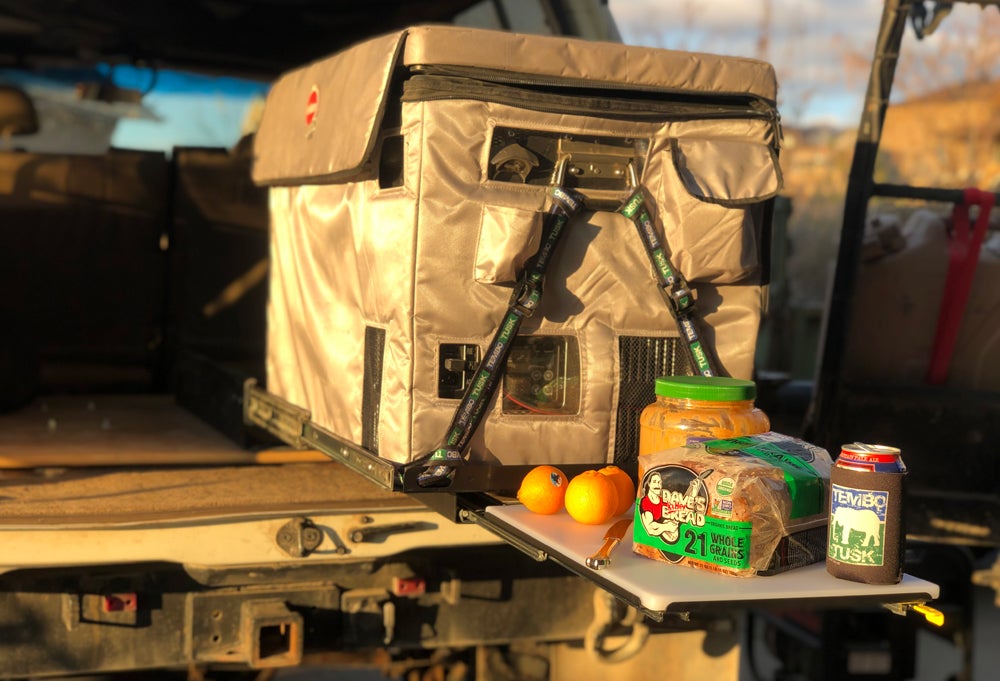
Whether in (re)loading or removing contents, the convenience of a Tembo Tusk slide enables a fridge to be easily used. Weighing ~40lb, such slides also allow a fridge to be configured within an enclosure, and are essential for taking full advantage of limited cabin space. Tembo Tusk takes the benefits further, offering an accessory Cutting Board Assembly. Optionally mounted beneath the slide’s rails, this concealed work surface is a brilliant addition to the system. Resulting in only a modest increase in the fridge’s height, the Cutting Board gives users a 12”x18” food grade plain on which to prepare food.
Our Final Verdict
In only a few years, SnoMaster has gained a strong following for its well-built and full featured fridges. After using a pair of its most popular for models for two years, I have no hesitation in recommending them. With personalized customer service and a wide range of models, SnoMaster has made choosing a fridge a lot harder. SnowMaster’s quiet, high efficiency fridges boast a rare five-year compressor warranty, and include enough performance features that it’s hard to absorb them all when studying their web site. Supported by leading aftermarket brands such as Tembo Tusk, backcountry use of a SnoMaster fridge is an important way to extend and enable trips. If you’re ready to add a fridge to your adventure rig, SnoMaster should be among those you consider.
About the Gear Doctor: Dr. Sean Michael has been designing, abusing and testing outdoor gear since the 1980’s. He began reviewing for Off-Road.com in 2000, and today lives in the Northern Wasatch Mountains, where he is Professor of Outdoor Product Design & Development at Utah State University. Follow his trips and gear at thegeardoctor on Instagram.
We are committed to finding, researching, and recommending the best products. We earn commissions from purchases you make using the retail links in our product reviews. Learn more about how this works.
